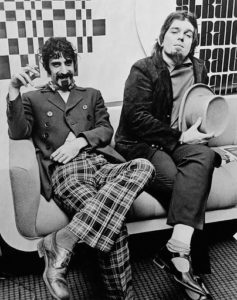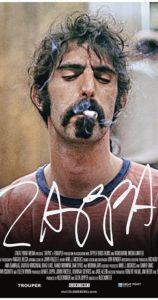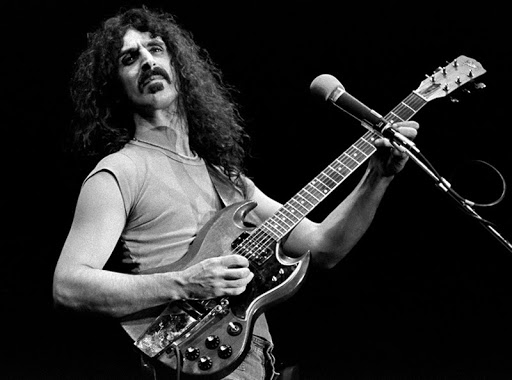Photo Courtesy of San Francisco Art Exchange
Author: Svetlana Sohoni
My first introduction to Frank Zappa was a video of him playing live in true 70’s fashion: long hair, shirt off, bell-bottoms, and riffing on his guitar. The sounds were unlike anything I had ever heard, and the audience was reciprocating his energy. I was first drawn in by the costumes on stage, specifically the crazy makeup and hair. Then as I listened more closely, I was blown away by the performance. Zappa’s improvised guitar solos in the song were mind-boggling to me because they were so calculated and skilled, but also sounded so raw. His chemistry with the band was undeniable and he commanded attention onstage for all of the above. Who was this man? I immediately went down a never-ending Zappa rabbit hole.
Frank Zappa is unlike any other artist I have ever encountered. The deeper I delved into his world and his compositions the more I was struck by his authenticity and raw ability to create unique music. His art combined all possible creative outlets: performance art, video, costuming, and improv.
Critics of Zappa say that his music lacks depth and emotionality, but I would argue that Zappa’s music was filled with critical social commentary and was not made for mainstream media consumption, but to challenge listeners to critically engage with his sounds and lyricism. Because Zappa’s music and identity are so complex, here’s some information I’ve gathered to ease your listening.
His background was influenced by R&B, blues, doowop, and modern composers like Edgard Varese who used experimental sound and dissonance as a part of their music. This can be seen in much of Zappa’s work. Zappa sought after music that was not mainstream or palatable to the general public, which is reflected often in his music. Many consider him to be the father of comedy rock because he used the sounds and lyrics in his music as a tool for his social commentary and opinions.

Zappa was pushing boundaries in more ways than one. He started one of the first racially integrated bands in California, which drew him both attention and backlash. Zappa didn’t see limits when it came to music and sought to push further and explore all the possibilities. As a composer, his works were extremely complex and admired by many young and old musicians alike. A well known piece of his, “The Black Page,” to this day is considered to be one of the hardest pieces of percussion to play.
His band, The Mothers of Invention, was filled with skilled musicians who went on to make big names for themselves in the music industry. Zappa had high standards for his music, and the auditions he held for new band members were infamous for being some of the most challenging. Guitarists had to play complex riffs in different genres of music while Zappa asked them to add random notes that seemed impossible to fit in. Drummers had to sight read complex pieces of music in the most difficult time signatures. Working with Zappa meant being skilled not only in reading his complex compositions, but also improvising onstage.
His live performances were as much a concert as they were performance art. One of my first introductions to his live shows was a video of him speaking over his drummer making seal noises while continuing to play. He was known for involving the audience in the performances, and if you were at a Zappa show you could expect to be in some amount of discomfort.
Zappa was such a strong believer in freedom of expression that he was willing to testify in front of Congress to stand up for his beliefs. Zappa led the fight against labeling records with an explicit content sticker as he believed that doing so would be unfair censorship. He believed that this act would be a disservice to children and infringe on their civil liberties.

The recent release of the film “Zappa” is a great introduction to his artistry, as it gives great insight on who he was as a person and what made his music special. It gives backstory on his upbringing and insight into what it was like working with him through the interviews of musicians in his band and on his record label, and other artists that worked closely with him through his career.
A great introduction to his discography is the album “Apostrophe (‘).” Songs like “Father Oblivion” show his masterful composition while songs like “Don’t Eat the Yellow Snow” and “Cosmik Debris” showcase the more dramatic and comedic elements used in his music. The album “Hot Rats” is another one of my favorites and “Peaches en Regalia” is a fantastic introduction to his more orchestral compositions. I would also highly recommend watching live performances of “The Mothers of Invention” because the way he conducted his band is truly impressive to watch and his live performance art was as much a part of the music as the instruments themselves.
Zappa continued writing and composing til the day he died, and new music continues to be released multiple times a year. With the hundreds of records by Zappa, there is plenty of music to listen to and discover!
Svetlana Sohoni | KXSU Music Reporter

